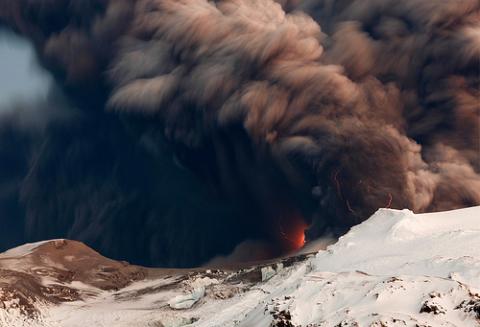Ash cloud disruption a new fact of flight?

Are we going to have to get used to Iceland’s volcanoes disrupting Europe’s air traffic plans? The experts say yes. By John Holden.
This week, Iceland’s Grímsvötn volcano erupted pushing a huge plume of ash into the stratosphere. This did not lead to the chaotic air traffic disruption caused by last year’s Eyjafjallajokull volcano which triggered the biggest aviation shutdown in Europe since World War II. But the recent eruption did cause some problems in Germany and Scotland and therefore begs the question: is this something we’re just going to have to get used to?
The Centre for Climate & Air Pollution Studies at NUI Galway are currently developing Ireland’s own capability to assess and forecast Icelandic plume dispersion. In conjunction with MET Eireann and the Irish Centre fro High End Computing, researchers have done a 20-year analysis. “We’re looking at meteorological data and what the impact would be on airspace if there was a continuous eruption,” explains Professor Colin O’Dowd, Director of the Centre. “It’s an attempt to understand the role of meteorological patterns through simulations. We are still in the early stages of analysis but what we have found thus far is that there is a higher risk in the summer months of airspace being impacted in the future because the meteorological flow is more aligned to perturb Irish, English and western European airspace.
“Different seasons have varying synoptic scale circulations,” he says. “In the summer there is a more connected air flow with the location of Icelandic low pressure moving further north bringing in a more north westerly airflow over Ireland whereas in winter colder low pressure moves in a more southerly direction.”
It feels like this has only become a problem in recent times. However, it is affecting modern life in a way that was never an issue before. “There are approximately a dozen volcanic eruptions around the world that are powerful enough to launch ash clouds to heights of 10 kilometres or so into the stratosphere and this is where the problem lies,” explains Dr Kieran Hickey of the NUI Galway Geography department. “This is the cruising altitude for a modern commercial airliner. In the past most of the propeller planes that were used didn’t go up high enough to get into ash plumes. But modern jet aircrafts reach higher altitudes and ash can drift hundreds, even thousands of kilometres on the fast winds found at this level of the atmosphere. Plus there are so many more flights than ever before.”
In fact, on any given day in Europe there can be up to 28,000 short haul flights scheduled. “Europe is perhaps the busiest airspace in the world,” says O’Dowd. “So the impact of volcanic ash in the stratosphere is magnified compare to more remote regions.”
The choice now is to try and get used to less frequent air travel or develop technology that makes modern aeroplanes resistant to the effects of ash plume. Compared with other kinds of dusts - like desert sand - volcanic ash makes flying more dangerous because of its melting point. “We regularly find Sahara dust in our atmosphere,” says O’Dowd. “But it has little effect. The problem with volcanic ash is that it will vapourise at lower temperatures than Sahara dust. It then re-condenses on the surface of aeroplane engines forming a glassy coating.” It basically turns back into lava. It doesn’t need to be explained why this could be a problem, or as Dr Kieran Hickey puts it, “It’s a long established fact that aircrafts and volcanoes are not a good combination.”
If eruptions in Iceland do persist, for now it looks like modern travel will be affected. “We’ve become so much more litigious,” says Dr Ian Sanders of the Department of Geology at Trinity College in Dublin. “The thresholds are stricter than they used to be. Planes would have simply flown through ash plumes in the past. But there was a much more laissez faire attitude towards ash. Now the airlines are so afraid of the amount of litigation fees they would have to pay out if there was an accident. After they closed down airspace last year, aviation authorities admitted that they had been somewhat over zealous and that’s what will affect air traffic. There’s no evidence suggesting any greater incidence of volcanic eruption. They happen sporadically and are controlled by what goes on in the earth.”
However, with continued research like that in NUI Galway and the London Volcanic Ash Advisory Centre, it should become somewhat easier to predict when eruptions are going to take place and what impact they will have. “It’s very hard to make real time forecasts with volcanoes,” says Hickey. “We can only work on probabilities. It’s still an inexact science.”
{vimeo}24084400{/vimeo}
Image top wstera2.
